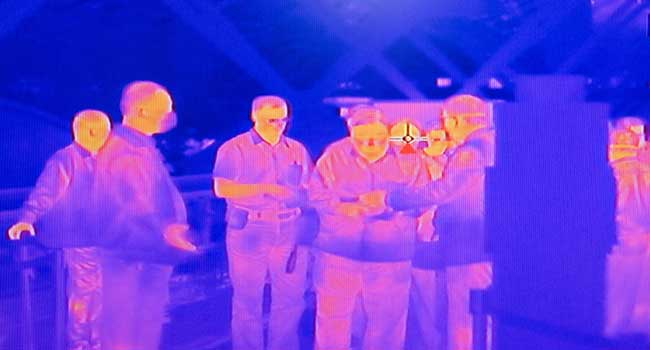
The Need for Thermal Cameras for Airport Security
Thermal cameras are becoming increasingly popular for airport protection
- By Roy Israeli
- Nov 13, 2018
Air traffic is on the rise. According to Airports Council International (ACI), passenger air traffic is expected to double in the next 15 years, to over 14 billion air travelers, thanks largely to major drivers of traffic growth through the Asia Pacific region.
To facilitate this growth, authorities are investing in bigger, more modern airports, with airport security at the top of the agenda. Regional, national and international airports are still considered to be prime targets for criminal and terrorist activity. Hence, securing the perimeters of airports is becoming a priority for numerous local, state and federal agencies.
The importance of providing around-the-clock surveillance and monitoring of airport perimeters has been highlighted by the heinous acts that have been committed on airport grounds and onboard airplanes. Traditional CCTV cameras that are still widely used for perimeter protection at airports around the world require light to display a decent image. In addition, many of these cameras generate higher false alarm rates, despite the advancements in video analytic software.
In response to these inherent limitations, thermal cameras are becoming increasingly popular for airport protection, both inside the perimeter and outside it. These cameras can operate in zero-light conditions as they are sensitive to heat and not light. Infrared cameras can provide true 24/7 coverage of the airport perimeter regardless of lighting or weather conditions. There are zero limitations when it comes to thermal imaging cameras. Any heat emitted by vehicles, equipment, infrastructure, individuals, animals or aircraft is easily picked up by the thermal cameras. The moment an anomaly is spotted, the appropriate response teams can be notified.
With recent advancements in infrared technology, a thermal camera system can now provide unmatched image quality – better signal to noise ratio, a higher processing capability, better range and no false alarms. Thermal cameras can be also integrated with additional sensors such as radar systems to provide an extra layer of protection to the perimeter. No two airports are alike: the geographical location, local weather conditions, airport size and layout, daily traffic, and numerous other factors require a tailored solution that takes each airport’s specific security challenges into consideration.
Therefore, thermal camera placement is based on all these factors. Cameras are placed at specific heights and distances to ensure that there are no gaps in perimeter coverage. A recommended perimeter protection layout will combine fixed, shorter range cameras with longer range PTZ camera systems that can provide 360-degree coverage, a few kilometers around the perimeter. These thermal cameras provide feasible solutions to meeting the security challenges faced by airports around the world.
About the Author
Roy Israeli is the marketing director of Opgal optronic Industries Ltd.